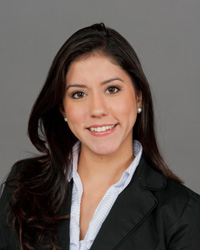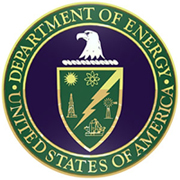
Carol Moreno-Pastor (Biomedical Engineering)
About DOE Fellow
Carol Moreno-Pastor received a Bachelor of Science degree in biomedical engineering at Florida International University. Born and raised in Venezuela, Carol moved to the U.S in 2005. She was the current events coordinator for the Society of Hispanic Professional Engineers (SHPE) at the FIU Chapter, and she is also a member of the Biomedical Engineering Society (BMES). During the summer of 2011, Carol worked as an intern at the Department of NanoScience and MicroSystems in the Center for Microengineered Materials at The University of New Mexico. The project title was: “Formation of multilayered biofilm by Shewanella oneidensis for microbial fuel cells.” Her focus was to examine the environmental conditions that stimulate the formation of multilayered biofilm of the bacteria under flow. She was able to determine the effects of media flow vs. no flow, slow flow rate vs. fast flow rate, and low carbon concentration vs. high carbon concentration, on the growth of Shewanella oneidensis in an aerobic environment. Additionally, she initiated experimental manipulation for the study of the bacteria in an anaerobic environment. Carol is now working as an engineering development program 1st technical rotation: product engineer, CMEP Plant Cost Reduction at Cummins Inc.
DOE Related Projects
Carol is currently working under the mentorship of Dr. Yelena Katsenovich, on the project “Sequestering Uranium at the 200 Area by In Situ Subsurface pH Manipulation Using NH3 Gas.”
Uranium (VI) is a key contaminant of concern at the U.S. DOE Hanford Site in Washington State, where a variety of hazardous waste streams were disposed in the subsurface and have now contaminated the soil and groundwater. The injection of a NH3 gaseous mixture causes the formation of NH4OH and a subsequent increase in pH. This manipulation significantly alters the pore water chemistry and promotes the formation of various aluminosilicates during recrystallization of minerals followed by co-precipitation of U(VI) and Al at higher pH conditions. These chemical reactions can potentially control the mobility of uranyl cations in soil systems since co-precipitated contaminants are less available for migration. The scope of this research assists in the uranium remediation of the vadose zone. Carol’s research focuses on the role of major pore water constituents such as Al, Si, bicarbonate, and Ca on the formation and solubility of uranium-bearing precipitates created after NH3 gas injection.
